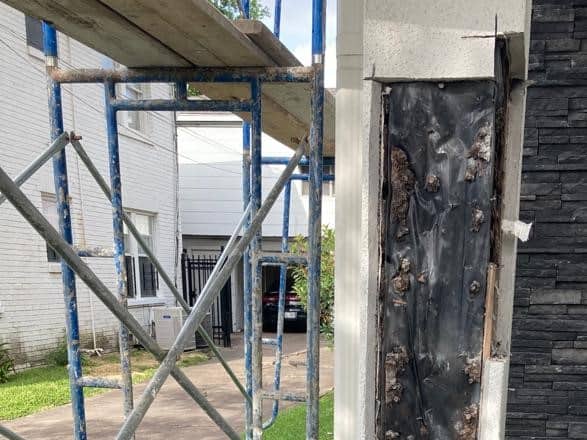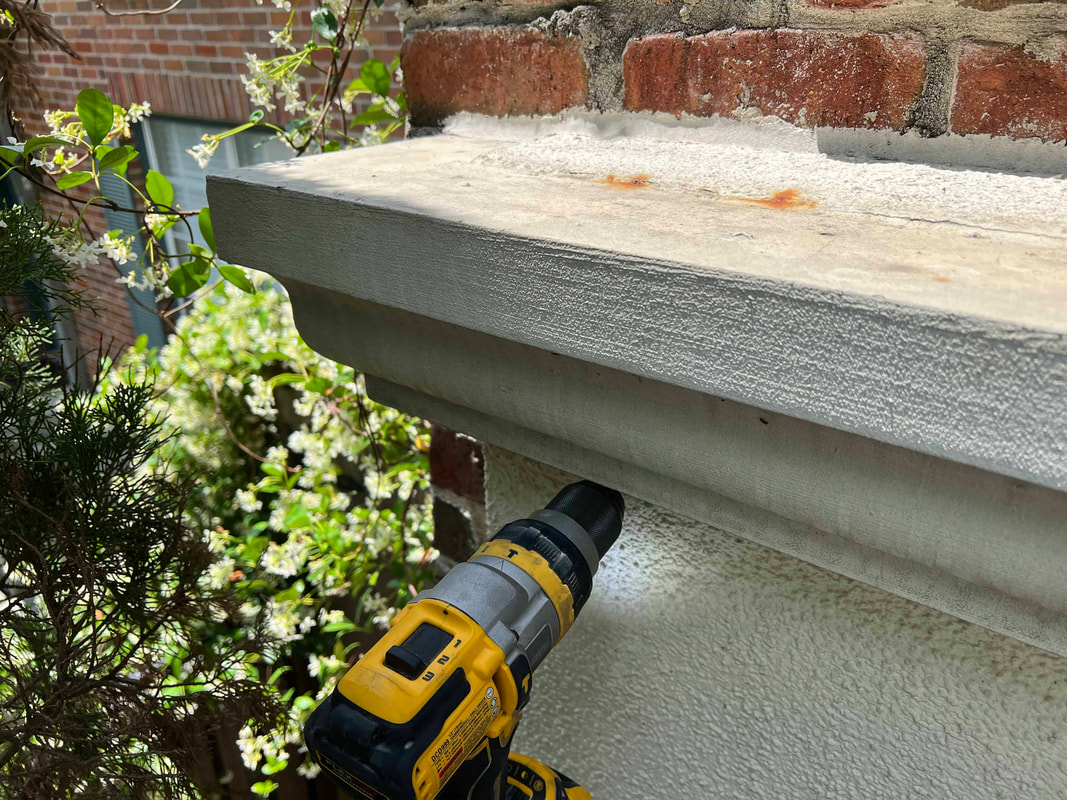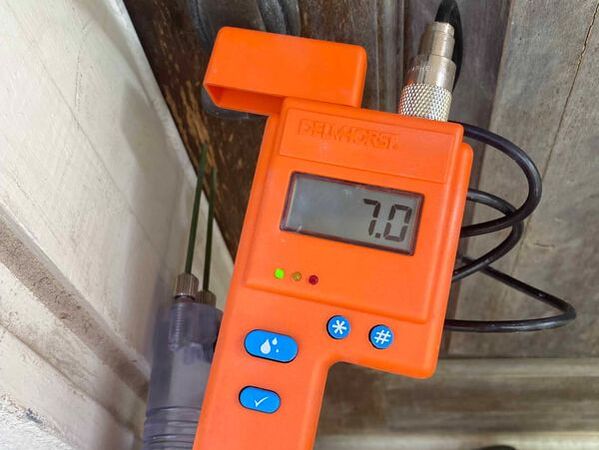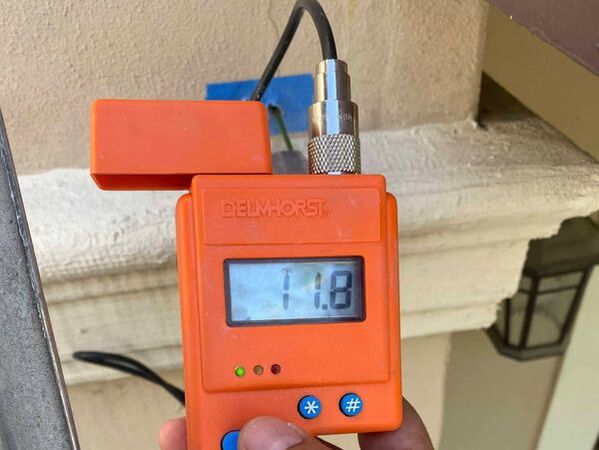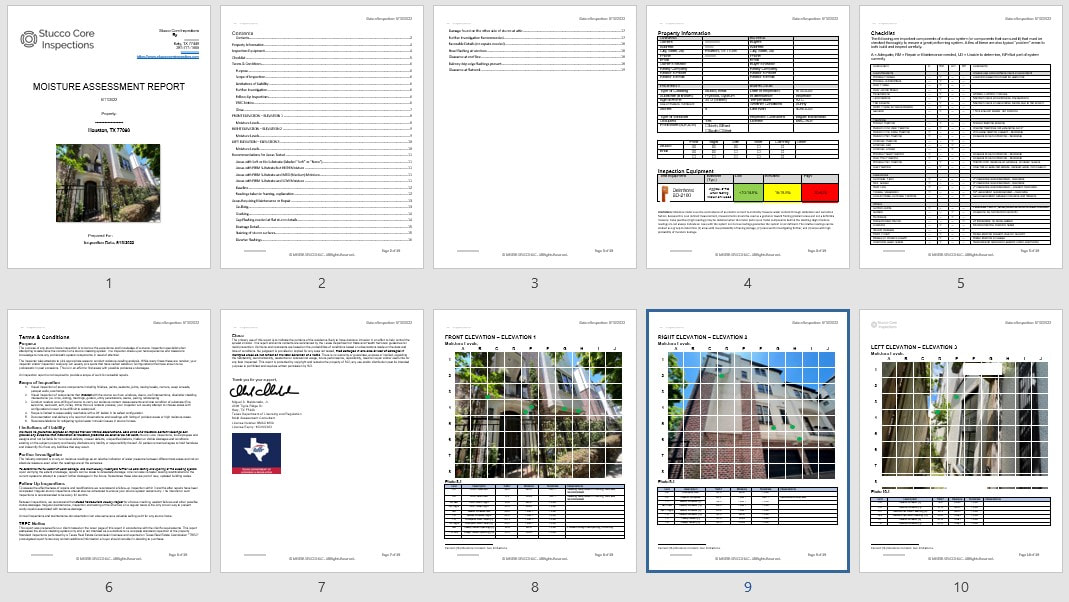Stucco InspectionA stucco inspection is an evaluation of the substrate behind the stucco. It measures moisture (quantitatively) and firmness (qualitatively) of the substrate (plywood).
This is the only way to know if the stucco substrate (the material behind the stucco) is still in good shape and uncompromised. While the stucco may look in good shape to the naked eye, there may be hidden water damage that is unable to be found unless an invasive method is utilized. In theory, the only sure way to know if the substrate is truly compromised or not is to open up a section of the stucco. Since this can be a pricey way to check the condition of the stucco, an invasive inspection with drill probes is usually the most optimal solution. |
Steps Of A Stucco Inspection
1. Drill one or two probe holes into the chosen probe area
|
The home inspector will drill one or two holes (depending on the type of probe equipment) into the stucco. These holes are drilled with a conventional drill and a masonry drill bit. The inspector will usually feel a bump or a change in resistance once the bit has passed the stucco/concrete. This is because masonry drill bits are incompatible with wood materials and will usually struggle to make holes in wood, especially firm wood with integrity. At this time the inspector will note whether the substrate can be considered to be "FIRM", "SOFT" or somewhere in between. This qualitative analysis is easily the most important portion of the report. There is no denying there is a certain possibility of user error. However, the inspector will usually find problem areas with this method and this will be invaluable information for the stucco repair contractor, the prospective home buyer or the current home owner or seller.
Do not be misled by high or low moisture values, though they are important. The priority is to know or find out whether the substrate is solid or if it's compromised. |
Call Today! 281-771-1565
2. Measure moisture of the substrate
The moisture levels of the areas tested are taken and documented. Typical ranges of acceptable values will depend on the instrument of choice. We use a Delmhorst DB-2100 and the typical accepted ranges are:
- <10% -15% - Low Moisture (Green Light)
- 15-19.99% - Mid Moisture ( Yellow Light)
- 20%+ - High Moisture (Red Light)
- 40% - Saturated (Does not go above 40%)
3. Caulk Holes
The holes are covered with an approved sealant that closely matches the wall color. Because the holes are relatively small (3/16-3/8") they are usually not very visible upon sealant application.
4. Take Pictures and Note Measurements
Measurements will be recorded into field notes or directly into inspectors software. In addition to the probe measurements, the inspectors will take pictures of the home section being studied, so that he may be able to communicate which section of the house was tested as part of the report.
5. Prepare Rest of Report from Notes and Pictures
The inspector will prepare an easy to read report of his findings. See a sample report here or click on the image below.
